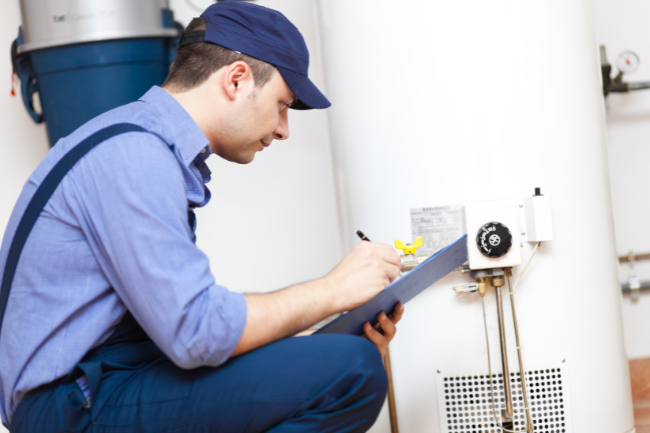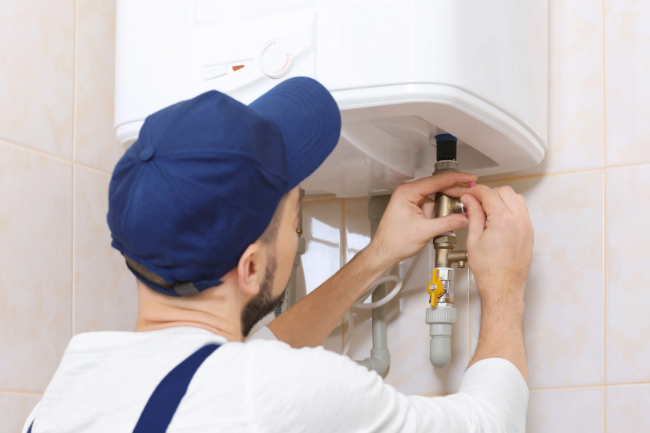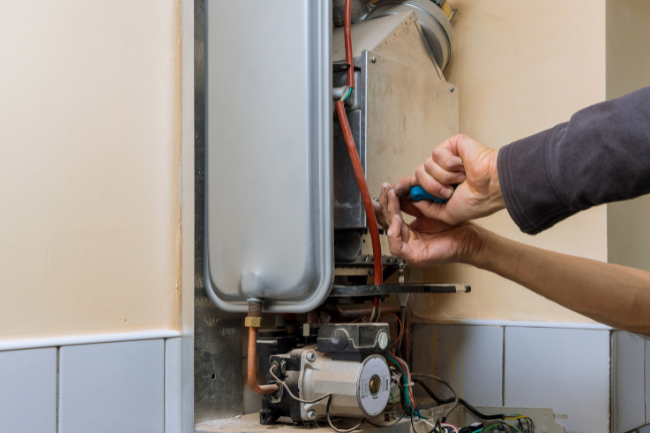Simple Hot Water Heater Repair Tips
Posted by William Heinselman on
 One of the most important household appliances, the water heater must regularly be assessed to avoid serious future problems. When troublesome situations do arise, however, there are a couple of hot water heater repair tips that can get your tank working again in no time.
One of the most important household appliances, the water heater must regularly be assessed to avoid serious future problems. When troublesome situations do arise, however, there are a couple of hot water heater repair tips that can get your tank working again in no time.
Are You Draining Your Hot Water Heater?
To remove sediment build up from the bottom of your water heater tank, most manufacturers recommend draining your heater at least every six months. This can prevent discoloration of water and hampered performance. Draining your water heater on a steady basis can also improve health and save money. This hot water heater repair tip has just a few easy steps that apply to both gas and electric water heaters.
- To begin the drainage process, first shut off the water supply to the tank.
- If you have a gas heater, turn off the gas at the main supply line; if you have an electric heater, shut off the power at the fuse box.
- Next, if the floor drain is available, attach a garden hose to the heater drain valve located at the tank bottom. Then adhere the other hose end into the floor drain.
- If there is no floor drain, place a water bucket under the drain valve of the hot water heater tank.
- To permit air to replace the water that is draining, turn on a hot water faucet.
- Drain a few gallons of water from the tank by opening the drain valve.
- Next, close the drain valve. Leaving the hot water faucet open, turn the water supply on. The tank is full when the water begins to come out of the faucet.
- You will need to repeat this process until the water runs clear.
Hot Water Repair Tips for a Leaking Tank: So Easy You Can Do Yourself
Do you notice water pooling on the floor around your tank, or condensation dripping down the sides? Then you most likely have a leaking hot water heater. If you live in a humid climate, this can be caused by cold water entering the tank. To check to see if this is the problem with your heater, turn off the gas or power for a short time, and see if the water continues to pool.
Occasionally the source of the leak is the temperature pressure relief valve (TPV). A horizontal lever, this water heater part is located at the top of the tank at the water outlet joint. If you have leakage, attempt firmly tightening it, without over-fastening. To check and see if the TPV operates, lift the lever and verify that water is emitting out the vent pipe connected to the valve that goes down the side of the hot water heater.
Heating Problems Are One of the Most Common Problems of the Electric Hot Water Heater
Repair for heating troubles in tanks, although a familiar aspect, is very simple to fix. If you are experiencing no hot water, it may be due to a faulty heating system or a defective thermostat. To remedy this hot water heater situation, check both the upper and lower thermostats for power supply. Press the button to reset the thermostat to ascertain whether or not it will begin operation. You will need to replace the upper thermostat if there is no power to the upper system. If you are receiving power to the upper heating portion, but yet there is still not hot water, then it is time for an upper heating element replacement.
Wow-This Water Stinks! What To Do When Your Water is Foul-Smelling
A bacterial decomposition and anode rod (which is responsible for hydrogen gas generation) corrosion is the main reason your water may sometimes have that “rotten egg” odor. Ridding your water of this putrid smell is not difficult. All you need to do is simply clean and flush the tank with a diluted hydrogen peroxide solution. In the case that your hot water still smells after this process, it is wise to replace the anode rod.
Need professional help with your water heater? Then call the unrivaled BEST water heater experts in Sacramento, Express Sewer and Drain. Contact us today for a quote or to set up an appointment.
Topics: Water Heaters






